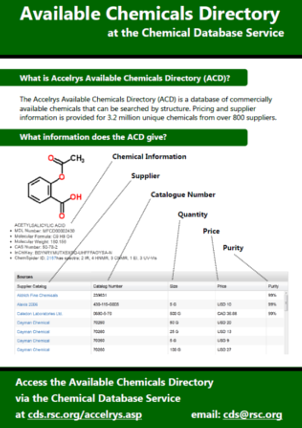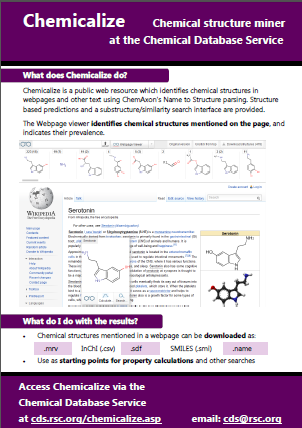ChemSpider is an online chemical structure database of over 29 million structures from more than 440 data sources. ChemSpider builds on the collected sources by adding additional properties and data, and links back to original data sources.
ChemSpider can be searched by:
- Name (trivial, trade, systematic)
- Chemical structure / substructure
- Identifier (SMILES, InChI)
- Properties
ChemSpider SyntheticPages is a free database of practical procedures for research workers in synthetic chemistry, written by chemists for chemists. Alongside the synthetic procedure you will find trouble-shooting tips, frequently encountered problems with syntheses and comments on repeatability and scalability.












